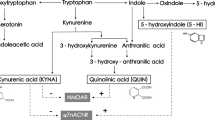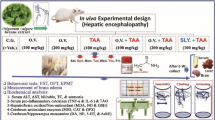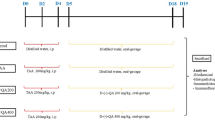Abstract
ABSTRACT: Children with inborn errors of urea synthesis who survive neonatal hyperammonemic coma commonly exhibit cognitive deficits and neurologic abnormalities. Yet, there is evidence that ammonia is not the only neurotoxin. Hyperammonemia appears to induce a number of neurochemical alterations. In rodent models of hyperammonemia, uptake of L-tryptophan into brain is increased. It has been reported that in an experimental rat model of hepatic encephalopathy, in the ammonium acetate-injected rat, and in patients with hepatic failure and inborn errors of ammonia metabolism, quinolinate, a tryptophan metabolite, is increased. Elevations in quinolinate are of particular concern, as quinolinate could excessively activate the N-methyl-D-aspartate subclass of excitatory amino acid receptors, thereby causing selective neuronal necrosis. We sought to identify an animal model that would replicate the increases in quinolinate that have been associated with hyperammonemia in humans. Levels of quinolinate were measured in hyperammonemic urease-infused rats and ammonium acetate-injected rats. In the urease-infused rat, brain tryptophan was doubled, and serotonin and its metabolite 5-hydroxyindoleacetic acid were significantly increased. Yet, despite the increase in tryptophan and evidence for increased metabolism of tryptophan to serotonin, there were no observed increases of quinolinate in brain, cerebrospinal fluid, or plasma. In the ammonium acetate-injected rat, significant increases of 5-hydroxyindoleacetic acid in cerebral cortex were also observed, but quinolinate did not change in cerebrospinal fluid or cerebral cortex. In summary, we were unable to demonstrate an increase of quinolinate in brain or cerebrospinal fluid in these rat models of hyperammonemia.
Similar content being viewed by others
Log in or create a free account to read this content
Gain free access to this article, as well as selected content from this journal and more on nature.com
or
Author information
Authors and Affiliations
Rights and permissions
About this article
Cite this article
Robinson, M., Heyes, M., Anegawa, N. et al. Quinolinate in Brain and Cerebrospinal Fluid in Rat Models of Congenital Hyperammonemia. Pediatr Res 32, 483–488 (1992). https://doi.org/10.1203/00006450-199210000-00021
Received:
Accepted:
Issue date:
DOI: https://doi.org/10.1203/00006450-199210000-00021
This article is cited by
-
Ammonia toxicity to the brain
Journal of Inherited Metabolic Disease (2013)
-
Tryptophan, adenosine, neurodegeneration and neuroprotection
Metabolic Brain Disease (2007)
-
Evidence for forebrain cholinergic neuronal loss in congenital ornithine transcarbamylase deficiency
Metabolic Brain Disease (2000)
-
Ornithine transcarbamylase deficiency: Pathogenesis of the cerebral disorder and new prospects for therapy
Metabolic Brain Disease (1997)



